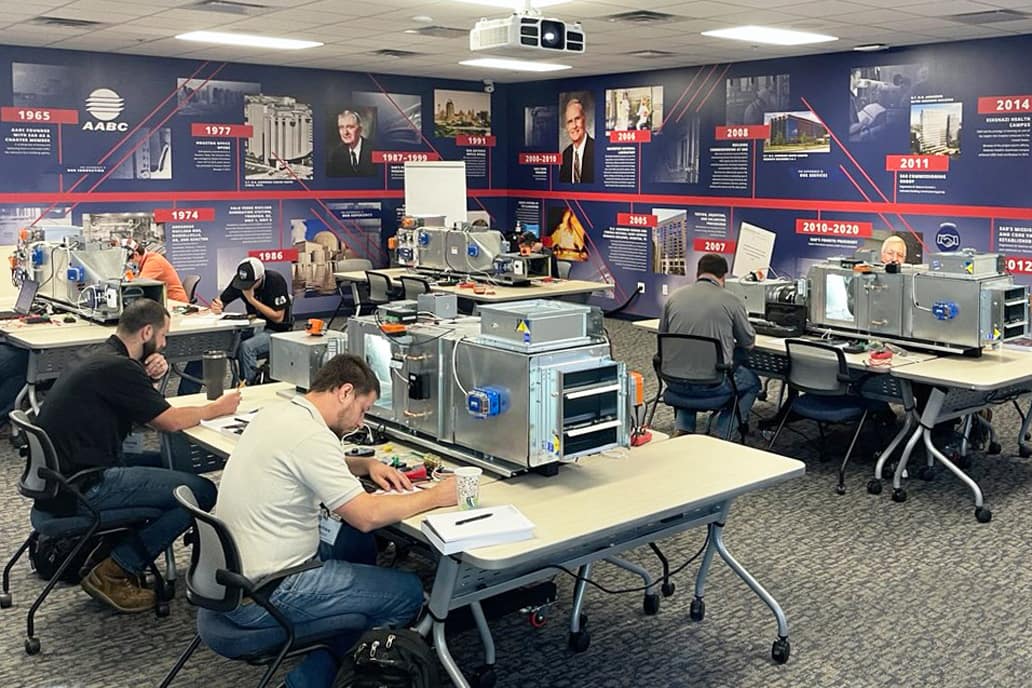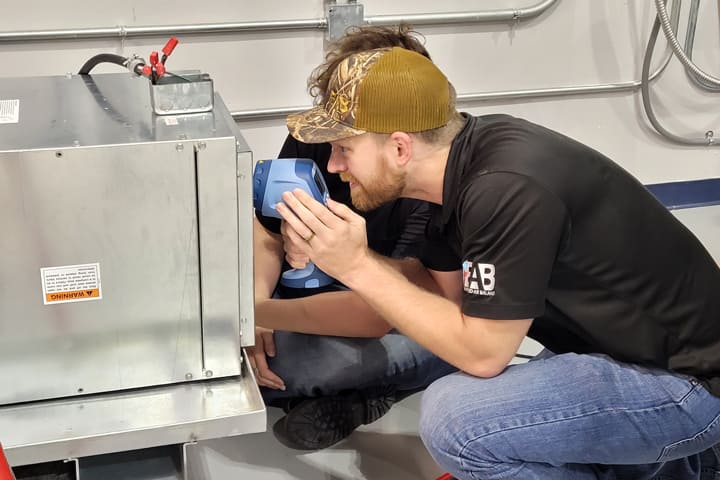
Many TAB, Cx and CEC Technicians consider job training a beginning point in their career that involves a supervisor/mentor, reading company literature such as handbooks and procedure manuals, and a growth of responsibilities on projects, culminating to a point in which they pass a certification test. Often, we see that once the certification is complete and out of the way, technicians tend to focus their efforts on their projects without much thought to continuing their training. After all, in many ways, working through projects is a way of continuous training. However, if certain opportunities within the project are not executed with an intentionality of educating and learning in mind, then a project can have many missed opportunities for training purposes. Additionally, if fundamental procedures, case studies and project challenges/successes are not shared peer to peer, many more opportunities for continuous training are missed.
Why is it so important to integrate continuous training into our team? This question is intended to be pretty obvious – continuous training is essential to maintain superior TAB, Cx and CEC services within a dynamic industry. Without continuous training, our team falls into mediocrity and we miss opportunities to showcase our expertise to building owners who depend on testing services to validate the performance of their equipment within high performance buildings.
There are two opportunities for continuous training that will be the focus for this article. The first is implementing and taking advantage of a continuing education program and the second is how to take advantage of on-the-job training throughout projects.
Implementing a continuing education program is much more than providing professional credit hours. The program’s primary purpose is to facilitate the following:
- Share case studies, lessons learned and unique testing procedures
- Allows “green” technicians to learn from the more experienced technicians
- Highlight new technology and equipment that is being implemented on projects
Each month a 60-minute presentation is given by a team of experienced technicians on a particular topic that is requested by peers in advance. Allotting time for discussion throughout the presentation is a key component to getting team members to talk about how the topic relates to their current project. This discussion time is critical to increase engagement from the audience and allows team members to participate with their own experiences. Essentially, the training experience can be as valuable as the participation rate from everyone within the room.

Opportunities for continuous on-the-job training occur each and every day as complex technical HVAC systems abound throughout different HVAC industries. One of the primary ways a technician can be challenged and continue to grow is to be exposed to the different systems found within different industries. For example, if a technician feels they have mastered the test and balance procedures and challenges associated with fan and coil units and roof top units within K-12 schools, it would be beneficial to gain experience with large AHU and hydronic systems serving hospitals. Other areas technicians can look for opportunities to grow is to seek out projects involving central utility plant testing, smoke control testing, clean rooms, laboratories and pharmacies. Each sector poses unique challenges that have many opportunities for growth. Being aware of these opportunities should require some personal motivation to seek out these challenges as they become available.
Additionally, there is an entire realm of project management and leadership opportunities that are presented every day for continuous training. A technician should be looking towards ways to sharpen their time management skills, steering and directing TAB discussions within MEP meetings, communicating project schedule concerns and issues and leading other TAB teams.
For on-the-job training to be successful, it requires buy in and commitment, both from the technician (who wants to learn and grow) and from the Project Supervisor (who wants to mentor and teach). Team leaders and Project Supervisors should embrace the opportunity to challenge and teach technicians that are less experienced in particular areas.
In many ways, continuous training requires everyone to be self-motivated. Ask yourself, how are you taking continuous training seriously? Are you taking notes during a continuing education presentation? Are you taking advantage of the numerous articles published in the company newsletter and in the AABC TAB Journal? Are you taking the initiative to request projects outside of your comfort zone in new markets/industries? Keeping up with a dynamic industry is difficult and continuous training is absolutely critical to continue delivering a high-quality product to high performance buildings.
Written by George Teasdale, P.E., TBE.
